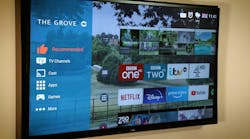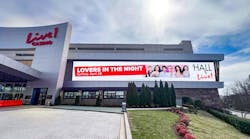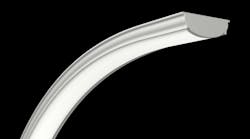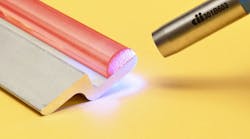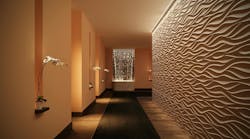Date Announced: 23 Jul 2009 SCOTTSDALE, AZ - The US Department of Energy (DOE) has issued Manufacturer Guidelines for qualifying both interior and exterior lighting products for the coveted Energy Star label. Very significantly, the program focuses on lighting quality as opposed to simple lumen output. Marketable light quality in Energy Star for SSL is now defined by the photometric distribution, color characteristics, and efficacy of the lighting fixture. The reason for this focus on lighting quality is that a successful application of a lighting product will meet consumer’s expectations not just for lumen output, but for safety and comfort factors as well. Procedurally, the DOE’s definition of light quality means to lighting product manufacturers that SSL products must be tested in both an Integrating Sphere and on a Moving Mirror Goniophotometer. The requirement that SSL fixtures be tested on a goniophotometer for intensity distribution represents an informed change in the DOE’s view on lighting products, which stems from its CALiPER program results. Lighting Sciences Inc. facilitates Energy Star qualification for its clients by offering the most comprehensive photometric services in the industry, including tests for LM 79 and LM 80. The DOE requires the following tests be performed by a CALiPER-approved laboratory:Photometric and Electrical:• Luminaire output (total lumen output, LM 79) - Goniophotometer or integrating sphere• Luminaire efficacy (lumens per watt, LM 79) - Goniophotometer or integrating sphere• Intensity distribution (candlepower distribution at specified angles, LM 79) - Goniophotometer• Zonal lumen density (lumen output in particular angular ranges, LM 79) - Goniophotometer• Analysis of light distribution by zones (DOE qualification report, LM 79) - Goniophotometer• Power factor test (electrical power factor) - Power factor meterColor:• Color Rendering Index (CRI, rendering of nine standard colors, LM 79) - Integrating Sphere• Correlated Color Temperature (CCT, Kelvin temperature of colors, LM 79) - Integrating SphereAdditional:• Lumen maintenance (LED life - depreciation over time, LM 80): -- Option 1: Component Performance, data normally obtained from LED manufacturer -- Option 2: Luminaire Performance, LSI tests at 0 and ≥6000 hours - Life test rack and integrating sphere• Temperature (power supply and LED temperatures, LM 80) – testing provided by Underwriters Laboratory (UL) or Canadian Standards Association (CSA). The DOE is considering a ruling change that will allow LSI to perform this test.Potentially required in the future:• Color spatial uniformity (distribution of color at particular angles) - Goniophotometer with spectrophotometer attachment• Color maintenance (change of color over lifetime) - Life test rack and integrating sphere• Output operating frequency (luminaire operating frequency) - Digital oscilloscope• Noise (volume of sounds emitted) - Noise meterAt just ten days, LSI’s CALiPER-approved testing laboratories offer one of the fastest turn-around times in the industry. Please contact LSI if you have further questions regarding Energy Star for SSL. About Lighting Sciences Inc.:LSI is now celebrating its 30th year as an innovative technology company offering photometric testing, illumination optics design, research and development, lighting test equipment and lighting test software systems. Twenty-six patents and numerous industry honors demonstrate Lighting Sciences’ preeminent position as the world’s most scientifically-advanced developer of photometric measurement systems. Whether its clients require equipment to build a lighting laboratory, or accurate independent testing services, LSI has earned a globally-recognized record of “Excellence in Photometrics.”
Contact
Ryder Tunney, Vice President Phone: 480.991.9260
E-mail:[email protected]
Web Site:www.lightingsciences.com
